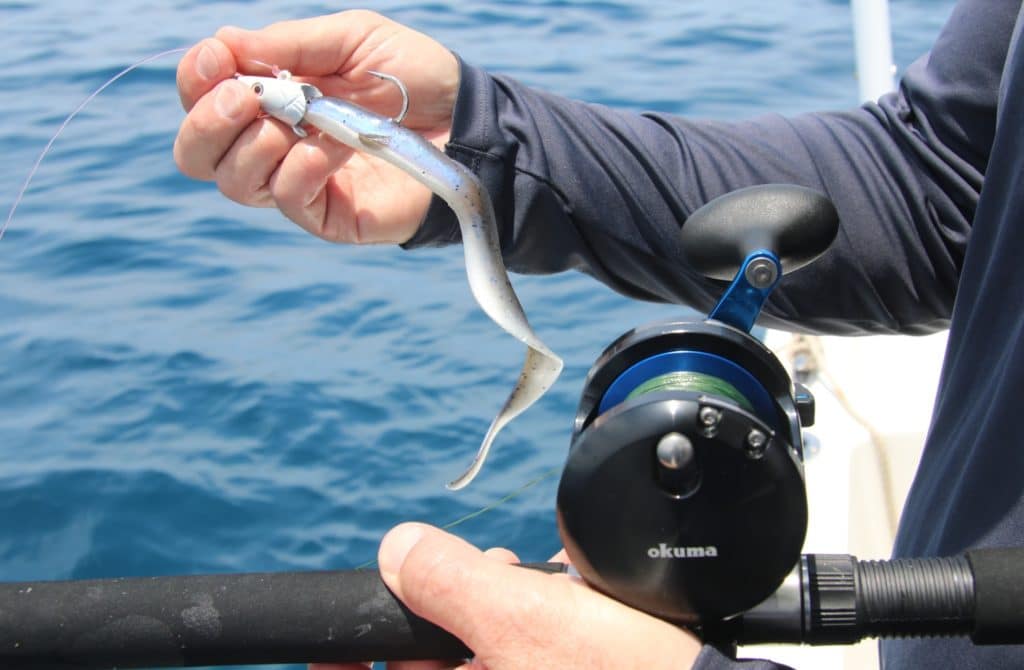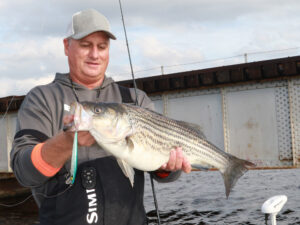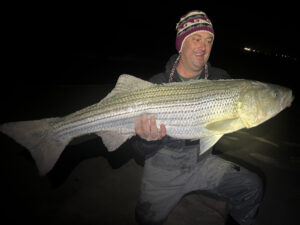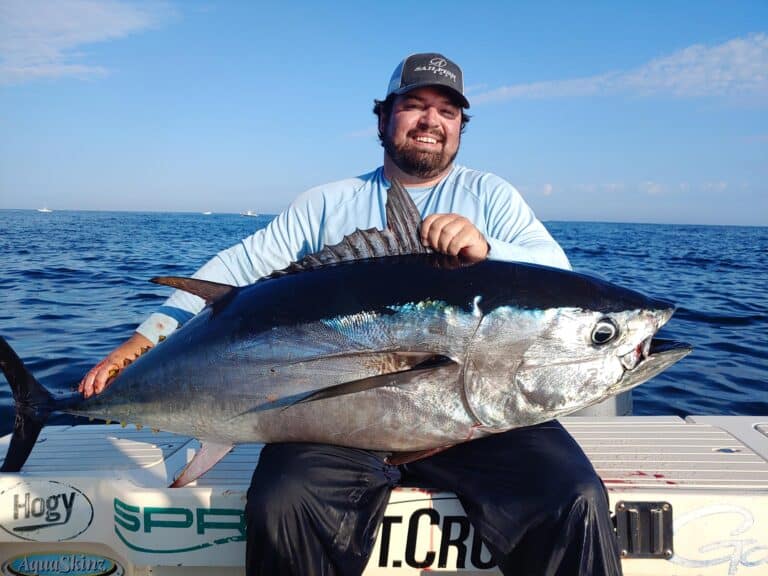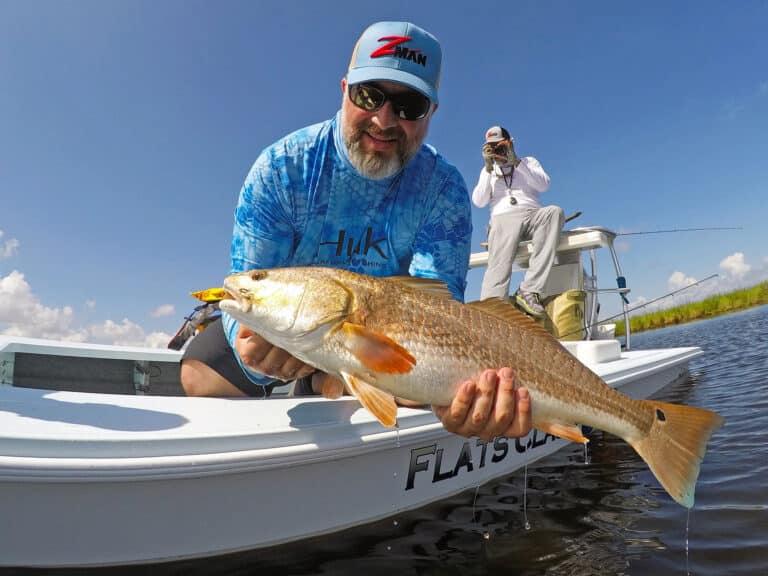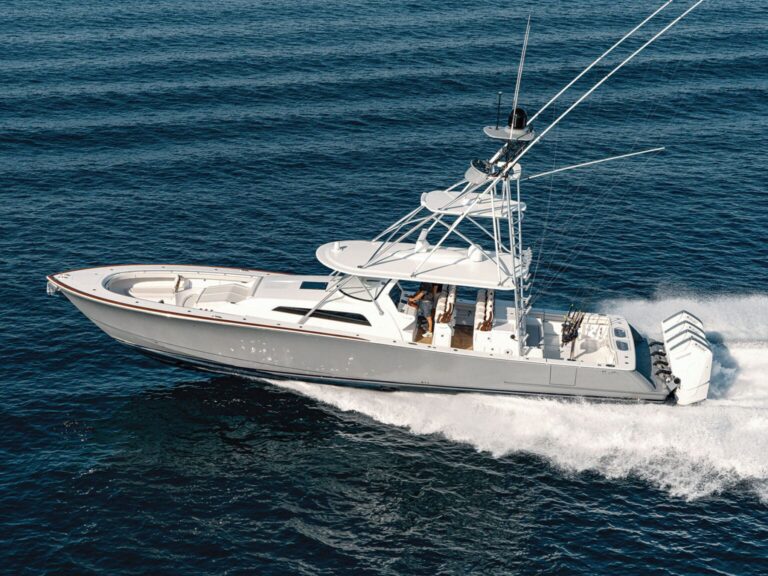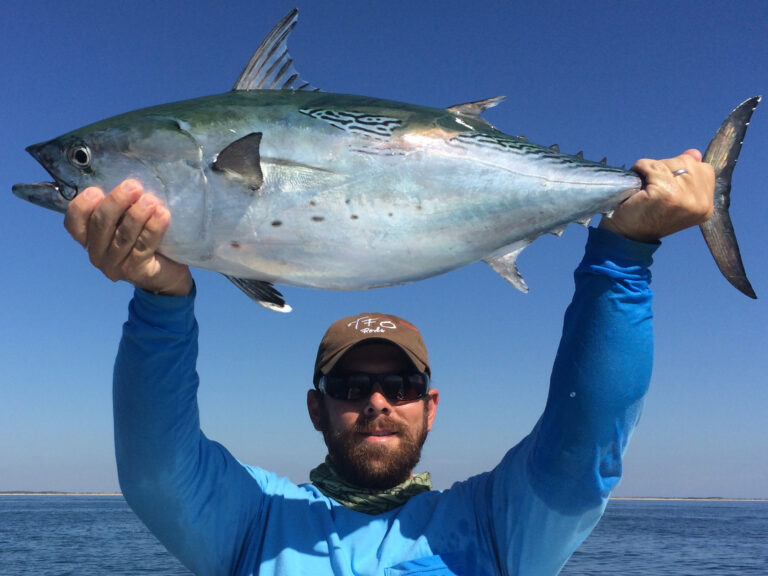Wrecks in the shallow Gulf of Mexico west of Florida’s Marco Island quickly become oases in the desert of a smooth, featureless sea bottom. As the only show in town, they attract a variety of game fish, but one never knows which species he’ll find upon arrival. One type of fish you can fairly well count on, though, is the goliath grouper. Given complete protection from any harvest, its populations have rebounded and often several brutes up to 400 pounds or more are likely to have taken up residence in a wreck. So tugging on some behemoths was on the agenda when Paul Michele, with Navionics, invited me and three other anglers to join him aboard his Andros 26 for a day fishing a wreck in 85 feet of water, some 45 miles out.



Barotrauma and Grouper
Why was Hall’s monster so cooperative for its photo session?
Hall’s goliath remained temporarily immobilized at the surface by the pocket of air that formed in its swim bladder. The normal amount of gas within that organ is just right to keep the fish neutrally buoyant where it lives, near the bottom. But when the fish is pulled rapidly upward, the gas expands as the pressure decreases toward the surface. Fish like goliaths have no mechanism for the immediate release of this trapped gas. The result is what’s called barotrauma. All goliaths we caught this day were vented — via a small puncture through their abdominal wall to release the trapped gas — and they swam back to the wreck to be seen no longer.


Three Reasons to Keep Goliath Grouper out of a Boat
Here are three good reasons not to try to pull a 350-pound goliath grouper into a cockpit:
The damn thing could sink a boat with that much mass plus the weight of the three or four guys needed hoist it all leaning over the gunwale at the same spot.
Doing this is illegal. Their populations seem to be soaring, and goliaths are no longer on the U.S. Endangered Species list, but they still enjoy complete protection from harvest; removing one from the water is a legal no-no.
AdvertisementAnd most of all: Pulling a fish this big into a boat for a photo session may well doom the goliath, in part because that enormous mass is designed to be supported in a medium such as water. Manhandling it inside a boat can wreak havoc on internal organs.


Amberjack or Almaco Jack?
Many an almaco jack has been mistaken for its cousin, the amberjack, by anglers unaware of the two different species. While they do look similar — and, as at our Gulf wreck, are often found together — in fact there are very distinct differences that make them readily distinguishable.
Almaco Jack

Greater Amberjack


